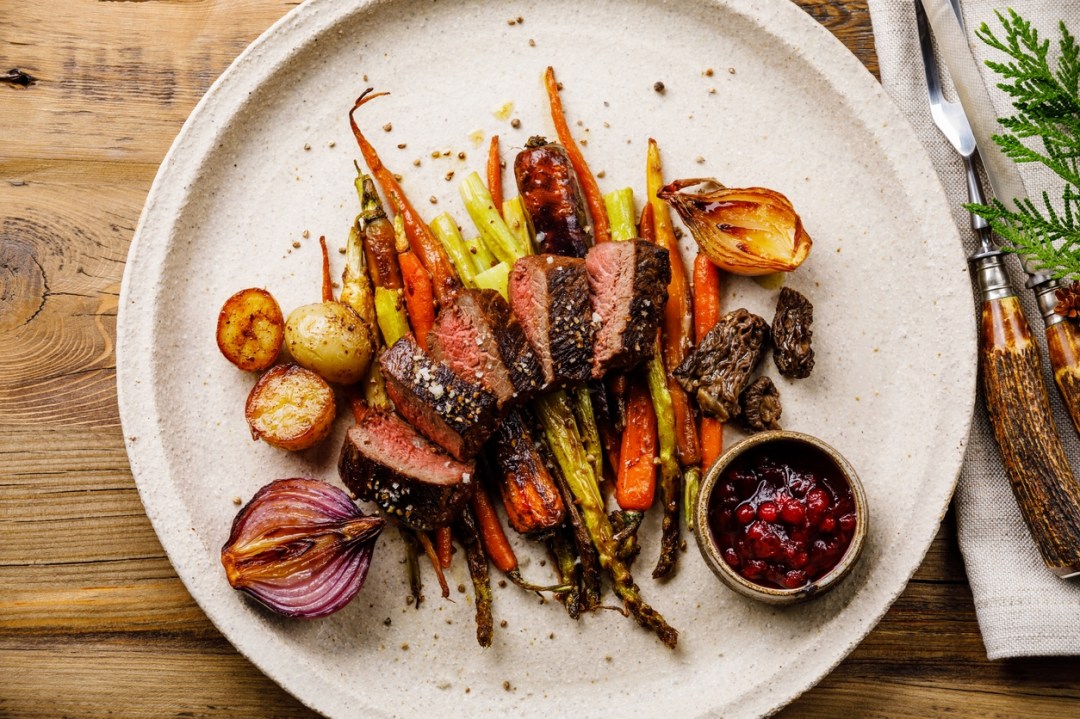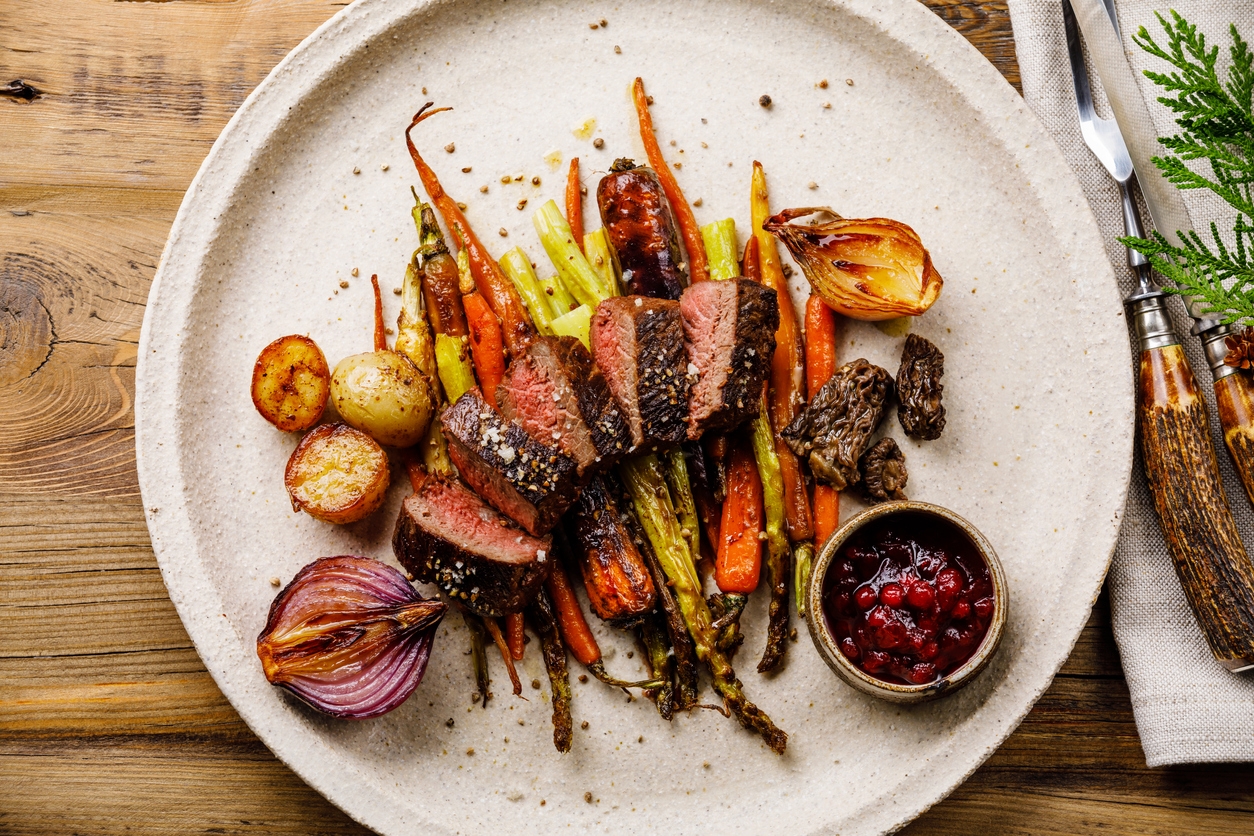Venison’s attributes are remarkable. It is the probably the most sustainable meat you can eat, given the unquestionable need to manage the country’s deer population to stop these elegant but pesky creatures from damaging woodland and wildlife habitats. And what of its health credentials? The deer’s free-foraging, cross-country roaming lifestyle makes it incredibly lean: higher in protein and lower in fat than any other meat, with zero cholesterol.
Ethically minded chefs and environmentalists have long been making the case for us to eat more venison, and more game generally. The Countryside Alliance’s ‘Game-to-Eat’ campaign has been banging the drum for years. Venison’s popularity is growing but we still seem a bit reluctant to embrace the meat on our doorstep: one of the country’s leading game chefs, Mike Robinson, last month blasted M&S for stocking New Zealand venison over the British venison which we have in such abundance.
The reputation of venison—especially wild—for having a strong, very gamey flavour may be what puts some people off this meat. But, as Mike Robinson explains, so long as storage temperatures are properly controlled from shoot to delivery, the meat’s flavour should remain mild and sweet.
British deer stocks have been rising for a while, a trend which has only been exacerbated over the past year in lockdown: with restaurants closed, the demand for venison from game dealers, and therefore the number of deer shot, has shrivelled. Pale Green Dot, which supplies sustainable produce to your doorstep, have launched a venison box as a response to the environmental challenge. As they point out, sales of venison are down 80 per cent since the closure of restaurants, and if deer numbers are not controlled populations could rise by as much as 30 per cent each year. Their box, which costs £22.50, contains diced haunch, sausages and mince—for chilli, Bolognese or a stalker’s pie. The Wild Meat Company also has a good range of venison cuts available to deliver from the Suffolk countryside to your door. And venison is becoming more ubiquitous in supermarkets, in a variety of forms: Ember Snacks, founded a few years ago by brothers from a Suffolk farm, do a range of British charcuterie which now includes delicious wild venison slices available at Sainsbury’s.
The different types of venison can be confusing. But there is no reason to be like a deer in the headlights at the butchers. Red deer is the most common and full of flavour. Roe deer is of denser texture. Fallow deer is milder, and therefore a good beginner’s venison. There are more recently introduced, fattier, breeds too—Chinese water deer and sika deer. And muntjac too, which is mild and tender and has found fame in Gymkhana’s signature muntjac deer biryani.
Buy wild if you can, though even farmed venison scores very well in welfare terms compared to other meat. Deer are free-spirited animals and resistant to full domestication, so even farmed deer graze naturally and generally avoid being reared at a forced pace like intensively farmed meat. The availability of both farmed and wild also means venison—unlike much game whose season is restricted to the autumn—is available year round.
Venison still sometimes appears to be regarded as a special occasion meat, a mainstay at banquets and fancy restaurants but less often used at home. If you want to pull out all the stops and have half a day to spend in the kitchen, you can try Adam Simmonds’s The Bulldog, which was his offering on Great British Menu for a banquet marking the 70th anniversary of D-Day. But venison needn’t be complicated. James Martin’s venison steaks with a stroganoff sauce is a dinner party dish that is no more difficult than beef. (Though take the time to warm the plates, as Simon Courtauld advises, as venison apparently cools more quickly than other meat). If you are roasting venison use the leg (referred to as the haunch) or the saddle.
Hugh Fearnley-Whittingstall pours cold water on the conventional wisdom of pouring a bottle of red wine over the meat. As he points out, a wine-based marinade actually draws moisture out of the meat and so makes it dryer when the aim is moistness. For a stew, try the shoulder, the neck or the breast (sometimes called the flank)—in this recipe from River Cottage it is flavoured with juniper and bay.
In eating deer, you’ll be doing your bit for the countryside and your waistline – a rare event in our ethically conscious, meat-wary world.







Comments